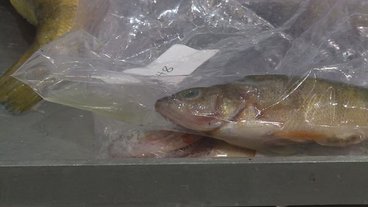
Parasite attacking Minnesota fish
ST. PAUL, Minn - Researchers at the University of Minnesota say a parasite is attacking fish in Minnesota and Wisconsin.
Nick Phelps and his team of researchers are trying to find out what is causing a disease that dissolves the muscles of fish. The research is taking place at the Minnesota Aquatic Invasive Species Research Center on the U of M campus. He said there are 26 known infected lakes in the state, with 15 species.
"Some of the most commonly affected fish are yellow perch," Phelps said. "I am concerned. As far as diseases go, this is a nasty one. People aren't known to be susceptible to this disease. The parasite basically destroys the filet and you are not going to want eat it."
For example, infected fish have the appearance of freezer burn. It is called Heterosporis. If you suspect that a fish has Heterosporis or any other disease you can report the threat, and see a list of infected lakes, here.
Currently, Phelps said it is not clear how the disease is spreading. Fish in Wisconsin have also been affected. Currently, there is no way to measure the economic impact.
"When you have lakes that have 30-percent (of the fish population) infected you can imagine how big of an impact this may have to fisherman trying to catch the fish," he said. "When you have something that liquefies tissue and you don't know a lot about the biology and the ecology of it that is cause for concern."
http://www.kare11.com/story/news/2015/10/07/parasite-attacking-minnesota...
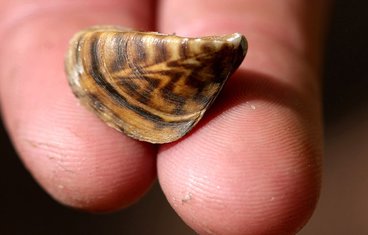
U of M lab mapping DNA of zebra mussels to slow spread
ST. PAUL, Minn. - Inside a University of Minnesota laboratory are two refrigerators filled with the arch invasive nemesis of Minnesota lakes.
"We've got samples of zebra mussels from all over Minnesota," says researcher Michael McCartney.
And in the freezer are extracts of DNA - the beginning of the research that one day could help wipe them out.

Researchers to try to map genome of zebra mussel
Call it the Zebe Genome Project.
University of Minnesota scientists Tuesday announced they will try to be the first in the world to map the entire genetic sequence of Dreissena polymorpha, aka the zebra mussel, the invasive mollusk spreading across waters in Minnesota and the country.
But unlike the Human Genome Project, which aspires to benefit humanity, the U's project could spell bad news for zebra mussel-kind.
"Like all species, zebra mussels have weaknesses that can be exploited for control, and we want to find those," Michael McCartney, the project's lead researcher and a professor at the University's Minnesota Aquatic Invasive Species Research Center, said in Tuesday's announcement. The center is teaming up with the U's Genomics Center on the effort.

Minnesota must stop the spread of invasive species in our lakes
The collapse of the walleye fishery on Mille Lacs is not an isolated incident, and is not the result of a "perfect storm." It is not even surprising. It was suggested back in 2005 when the lake became infested with zebra mussels and again in 2009 when the lake became infested with spiny waterflea.
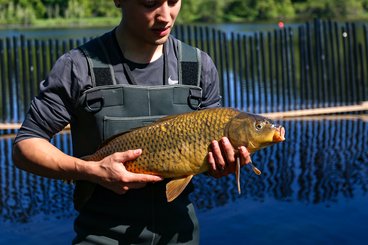
Researchers working to combat common carp in Minnesota
Efforts to remove invasive carp from waterways across Minnesota have been ongoing for more than 100 years, but researchers say they've made strides in learning about the destructive fish over the past decade.
These days, controlling the unwanted fish is a more realistic goal. Individual fish have been found in various locations moving north in the upper Mississippi, for example. The farthest north discovery came in August 2013, when a fisherman discovered the body of a silver carp on a dam abutment near Lock and Dam 5.
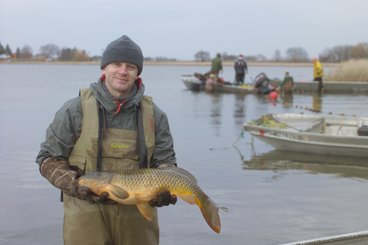
Scientists trying to make common carp a lot less so
When you mention invasive carp, people nowadays probably think of bighead and silver carp — those flying fish we're trying to keep out of Minnesota waters.
But the common carp that's already here is an invasive species, too, and an undesirable one at that. It destroys aquatic plants and stirs up sediment, degrading water quality. Researchers in the north metro area are learning more about these fish as they try to come up with new ways to manage them.
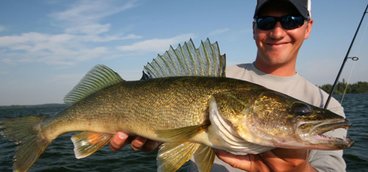
How Are Those Walleye Biting? On Minnesota Lake, They’re Not
GARRISON, Minn. — Along the rocky shore of Mille Lacs Lake on a recent morning, flat-bottomed fishing boats were idle in their docks. No customers wandered into a bait shop selling night crawlers, minnows and jumbo leeches. The restaurant at Twin Pines Resort was hushed and nearly empty, despite the postcard-perfect views of the vast, sparkling lake it offers from the patio.
And it was no mystery why. That morning, it had become illegal to fish here for walleye, the most treasured fish in Minnesota, on Mille Lacs Lake, perhaps the most famous place in the state to fish for it. Only a few days into August, summer on the lake seemed to be over.
“This is a walleye lake,” said Diane Emery, manager of the Blue Goose, which offers guided fishing trips, last week. “There’s no walleye, there’s no fishermen.”
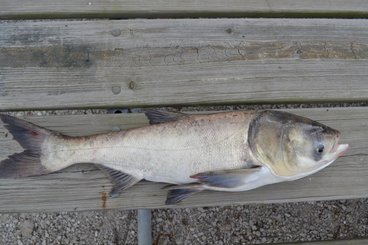
Confronting the Carp Conundrum
People keep catching bighead carp in the St. Croix River. After the news this summer that a number of the invasive fish, which could decimate the river’s ecology, have been caught in Bayport, more reports continue to come in.
At the same time, action is happening elsewhere to protect precious waters from the fish. In June on the Mississippi River, the St. Anthony Falls lock and dam in Minneapolis was permanently closed, shutting down the city’s shipping industry in an effort to block carp from getting farther upstream.

How about a wilder river? Imagine this Mississippi
A secret river runs through Minneapolis and St. Paul.
Almost no one knows that 30 feet beneath the surface of the languid Mississippi there are rapids. Not just a murmuring riffle or two, but a magnificent, roiling whitewater that once thundered for eight miles over massive boulders, around small islands and through the great river’s only high-banked gorge on its way from St. Anthony falls to Fort Snelling.

Sound may deter invasive carp
The last boat will pass through downtown Minneapolis next week as the upper St. Anthony Falls Lock and Dam closes for good.
It's part of efforts to stop invasive carp from spreading farther up the Mississippi River. But the move does little to protect Minnesota's other major rivers like the Minnesota and St. Croix rivers.
More invasive carp were caught just south of Stillwater in the past few weeks. That's the farthest upstream they've been detected.
The fish can grow upwards of 50 pounds and crowd out native species.
MPR's Cathy Wurzer spoke with University of Minnesota professor Peter Sorensen, who studies invasive carp with the Minnesota Aquatic Invasive Species Research Center.
